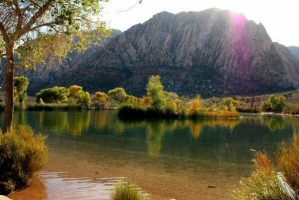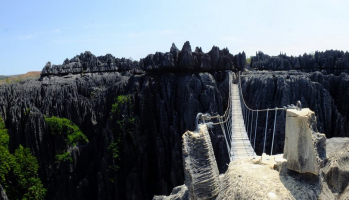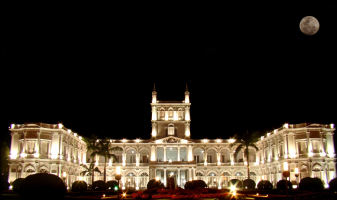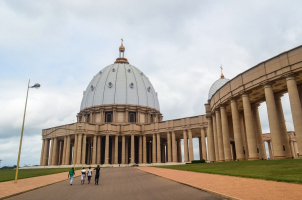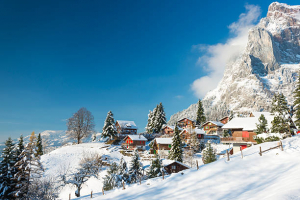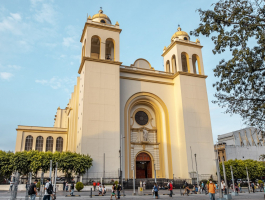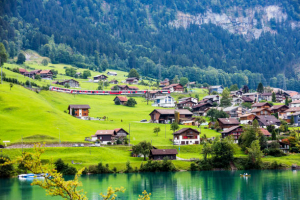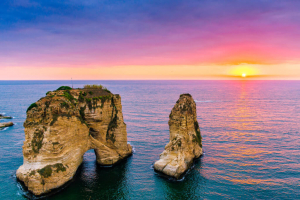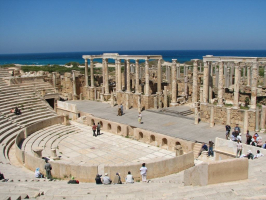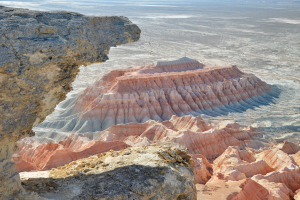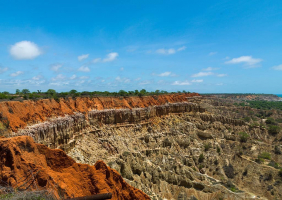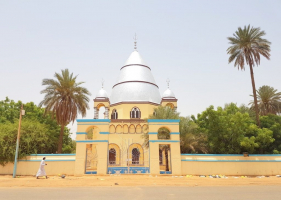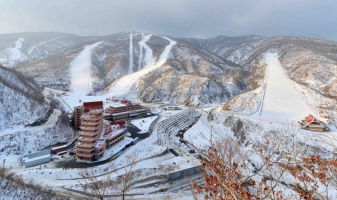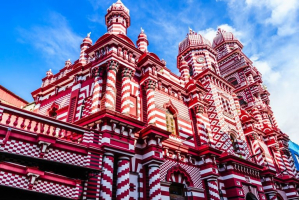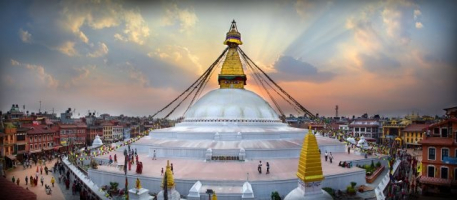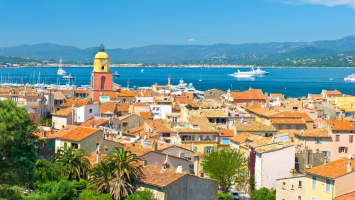Top 12 Best Places to Visit in Beirut
One of the most stunning cities in the Middle East is Beirut. All of the attractions of Beirut, which is a city on the Mediterranean coast, have a shared ... read more...history and personality with some of the most fascinating cities in the world, like Italy, Morocco, Egypt, and Greece. It goes without saying that tourism in Beirut has exploded in recent years. The magnificent mosque complexes constructed by the Ottomans and Mamluks are matched by the broad avenues and boulevards created by the French colonial masters, and the old Roman temple and bathhouse ruins top it all off. This article is about top of the best places to visit in Beirut.
-
The Baalbek temple complex is situated at an elevation of 1150 meters at the base of Anti-south-western Lebanon's slope, abutting the fertile Bekaa plain. During the Roman era, Baalbek's population peaked. One of the most famous sanctuaries in the Roman world and a prime example of Imperial Roman architecture, it is known for its enormous structures that were created over a period of more than two centuries. The Baalbek temple, which is more than 1800 years old, was constructed in honor of the Roman God of Wine. The Baalbeck International Festival, an annual festival of history and architecture, is currently held in the courtyard in front of the temple. If you enjoy history and architecture, this is one of the best spots in Beirut to be.
The extraordinary artistic and architectural worth of this combination of Greco-Roman ruins and much older remnants of Phoenician heritage underpins the significance of this site. On older remains that had been erected into a plaza made of twenty-four monoliths, the largest of which weighed more than 800 tons, the Roman building was created.After being gradually covered with enormous structures that were erected over the course of more than two centuries, Baalbek became one of the most renowned shrines of the ancient world. Its massive ensemble is one of the most outstanding relics of the Roman architecture of the imperial period.
Location: Beirut, Lebanon
Phone: unknown
Opening hours: all day
Rating: 5.0/5.0, 1249 Tripadvisor reviews
Website: https://whc.unesco.org/en/list/294/gallery/
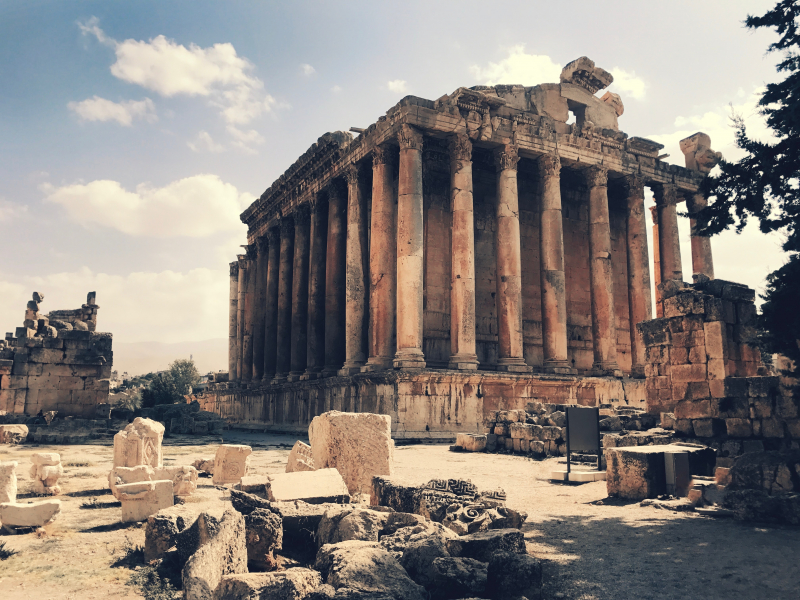
Image by Fred Nassar via unsplash.com 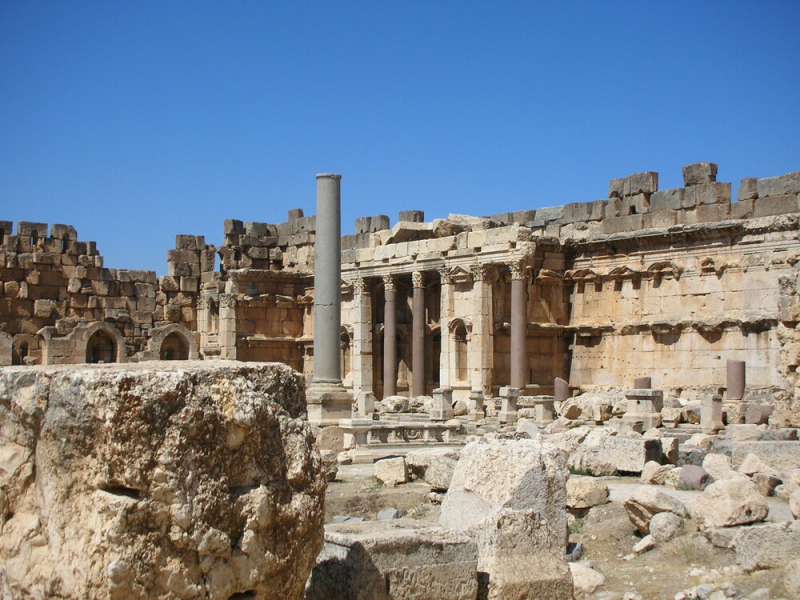
Image by Véronique Dauge via whc.unesco.org -
One of the main museums in this old city is the National Museum of Beirut. The museum's collection started after World War I, and it was formally opened in 1942. The National Museum of Beirut is one of the best places to visit in Beirut, Lebanon, and is home to around 100,000 items that were uncovered in the country and its neighboring regions. There are around 1300 antiquities on display, from from the prehistoric era through the Mamluk era in medieval times. The most famous ancient Phoenician artifact in the magnificent museum is a marble tomb that depicts a Phoenician ship. Because of its rich history and culture, the museum draws a large number of visitors each year.
The National Museum of Beirut is an architectural wonder with a basement, two stories, and a terrace made of Lebanese ochre limestone. The museum displays artifacts from prehistory and the Ottoman Empire, including those from the Bronze age, Iron age, Hellenistic, Roman, Byzantine, and Mamluk periods. Starting on the upper floor will offer you a better understanding of Lebanese history and allow you to distinguish between Seleucids and Phoenicians, so take the right steps to move chronologically onward.Two magnificently carved sarcophagi from Tyre, dating from the second century AD, are also interesting on the ground floor. One of them shows inebriated cupids, while the other shows the legend of Achilles. A standout is the eerie collection of human-faced sarcophagi from Saida and an intriguing reconstruction of a 2nd-century AD collective tomb from Tyre, complete with wall paintings depicting mythological scenes, both of which are located in the atmospheric and exquisitely presented basement (easily missed; look behind the stairs).
Address: 805 Rue 17, Beirut, Beirut
Phone: +961 1 426 703
Opening hours: 9 am - 5 pm
Rating: 4.5/5.0, 1501 Tripadvisor reviews
Website: http://museebeyrouth-liban.org/en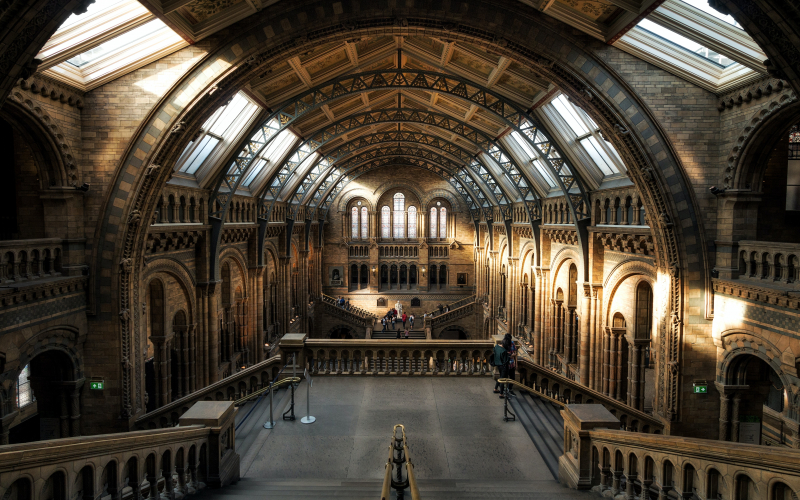
Image by Claudio Testa via unsplash.com (photo is used for illustration only) Video by Vic Stefanu - Amazing World Videos via youtube.com -
One of the most visited tourist destinations in Beirut is a wartime museum. The Museum for Resistance Tourism, also known as the Tourist Landmark of the Resistance, is a Hezbollah-run military museum located close to the southern Lebanese village of Mleeta. On May 25, 2010, the museum was opened, commemorating the decade since Israel left southern Lebanon. An major base for Hezbollah fighters once stood on the location.
Guides welcome visitors before starting a tour. The tour materials place a strong emphasis on the idea that Hezbollah stands alone as Lebanon's protector against Israel and is largely to blame for the Israeli departure that took place 18 years after Israel's second invasion of Lebanon in 1982. They add that Hezbollah's participation is defensive: "We won't strike the Israelis if they don't attack us. We are very peaceful people who have the right to live our lives as any other country would. We are not terrorists."
Tourist Landmark of the Resistance museum, which is run by Hezbollah's governing militia and emphasizes unbalanced perspectives of history, is still a significant location to visit in order to have a full picture of the region. The museum, which is three hours outside Beirut in the village of Mleeta, houses a Hezbollah bunker and an underground passage from the conflict.Address: Route Mlikh Aramta, Beirut
Phone: +961 7 210 211
Opening hours: 9 am - 7 pm
Rating: 4.5/5.0, 1170 Cybo reviews
Website: https://mleeta.com/mleeta/
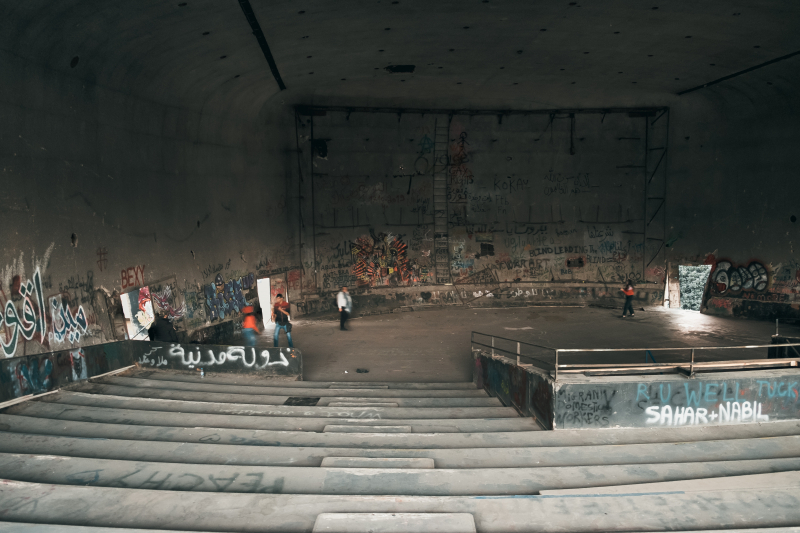
Image by Jo Kassis via pexels.com (photo is used for illustration only) Video by Judith Palma vlogz via youtube.com -
The Mohammad Al-Amin Mosque, a stunning example of post-modern Middle Eastern architecture that was finished in 2008, must be visited as part of any sightseeing in Beirut. The Muhammad Al-Amin Mosque, also referred to as the blue Mosque, is a masterpiece of post-modern Middle Eastern architecture. With a built area of roughly 11,000 square meters, a 48-meter-high blue dome, and 65-meter-high minarets (placed on the corners of the mosque), the design is reminiscent of the monumental architecture of the Ottoman Empire. The mosque has grown to be a prominent feature of the Beirut City Center skyline. One of the nicest locations to see in Beirut is the holy mosque, which has stunningly engraved walls and a majestic atmosphere. The Sultan Ahmed Mosque and this mosque share a lot of similarities.
The Mohammad Al-Amin Mosque's primary architect was Azmi Fakhuri. The Sunni house of worship, which was once a modest prayer area, was designed and constructed over many years. The mosque's main stone was the Yellow Riyadh Stone, and it also features several arches that are several storeys high. The intricate and beautiful Zakhrafat inside the mosque is open to the public, as are the wonderfully designed interiors and engraved walls. You'll be transported back in time by the mosque's lovely interiors, which are decorated with a gorgeous chandelier that hangs from the ceiling.
Address: Rue des Martyrs, El Chiah, Mount Lebanon
Phone: +961 3 306 237
Opening hours: 10 am - 7:30 pm
Rating: 4.5/5.0, 793 Tripadvisor reviews
Website: https://www.minube.net/place/mohammad-al-_-amin-mosque--a393221#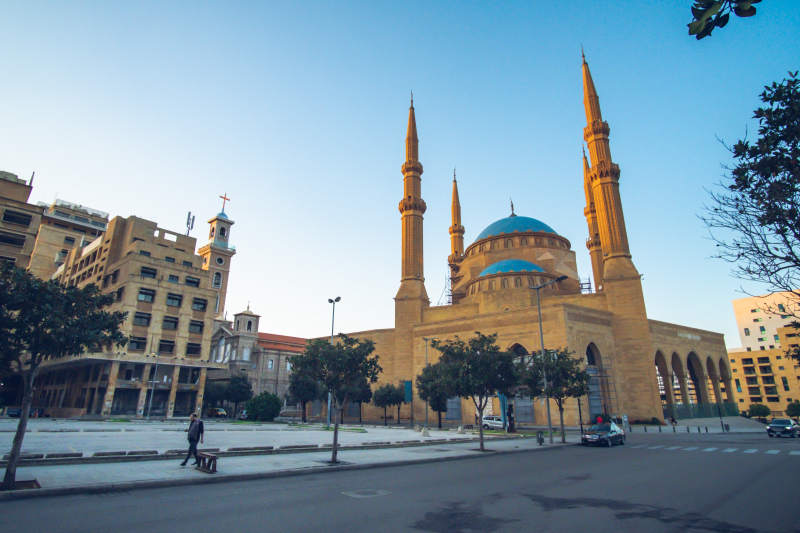
Image by Jo Kassis via pexels.com 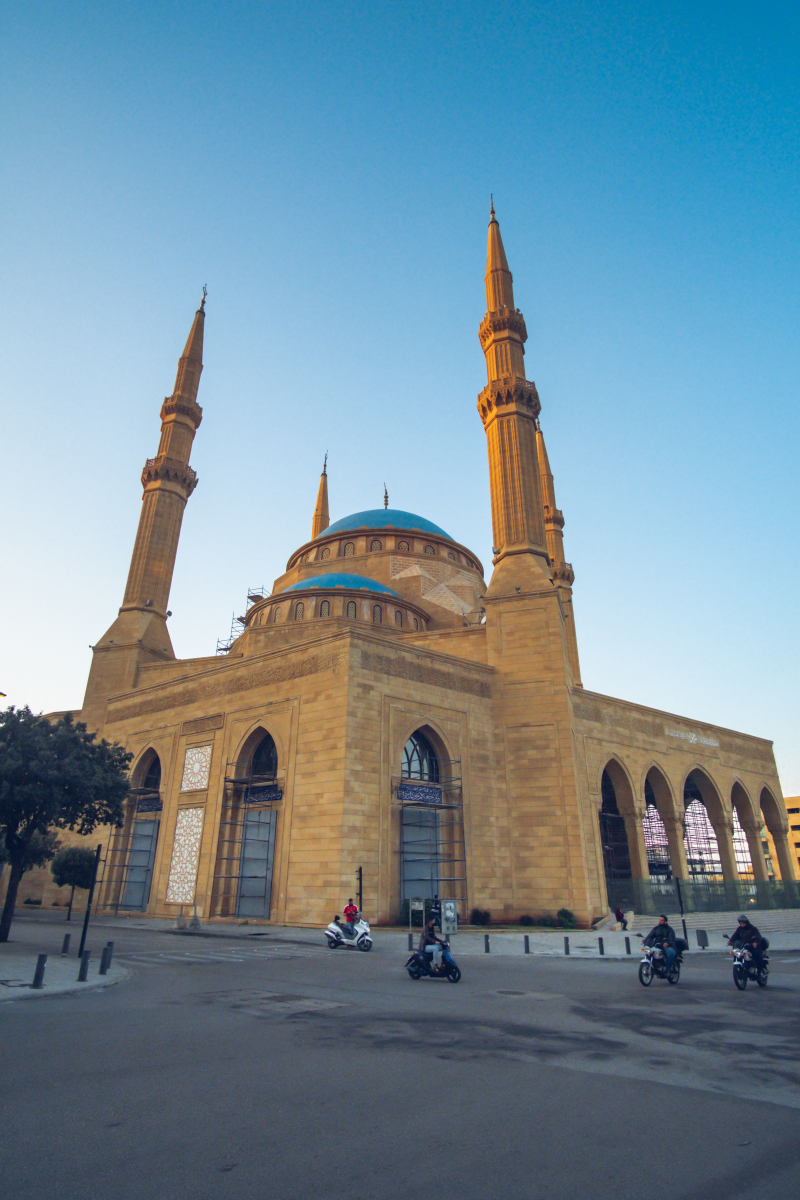
Image by Jo Kassis via pexels.com -
It is simple to understand why Beit ed-Dine Palace is regarded as one of Lebanon's greatest cultural assets when you first visit it because of its intricate architecture, antique mosaics, and exquisite decorations. All of this beauty, though, came at a significant human cost. The famous Beiteddine festival is held here every year, and the palace from the 19th century also houses a museum, making it worthwhile to visit.
The Beit ed-Dine Palace was built during a 30-year period starting in 1788 as the personal residence of emir Bashir Shihab II, who desired it to be a site of exceptional beauty and legendary opulence. The castle, which was constructed on the site of a hermitage known as Beiteddine (House of Faith), had every conceivable facility, including a sumptuous personal apartment for the emir, a harem, and a luxurious guest house that was frequently made available to visiting celebrities and dignitaries. Many of the surfaces had complex mosaics and motifs inlaid into them, many of which have held up quite well over time. Sadly, it is stated that all of this magnificence came at a high cost.
Despite the potential for labor catastrophes, the Ottomans finally took control of Beit ed-Dine Palace palace and used it as a government structure before turning it into a revered historic landmark. The palace is a significant destination for both tourists and Lebanese citizens today and still has its spectacular architecture and hand-made mosaics.Address: Street, Beït ed Dîne, Mount Lebanon
Phone: +961 3 232 844
Opening hours: 8 am - 3:30 pm
Rating: 4.5/5.0, 398 Tripadvisor reviews
Website: https://www.beirut.com/l/15242
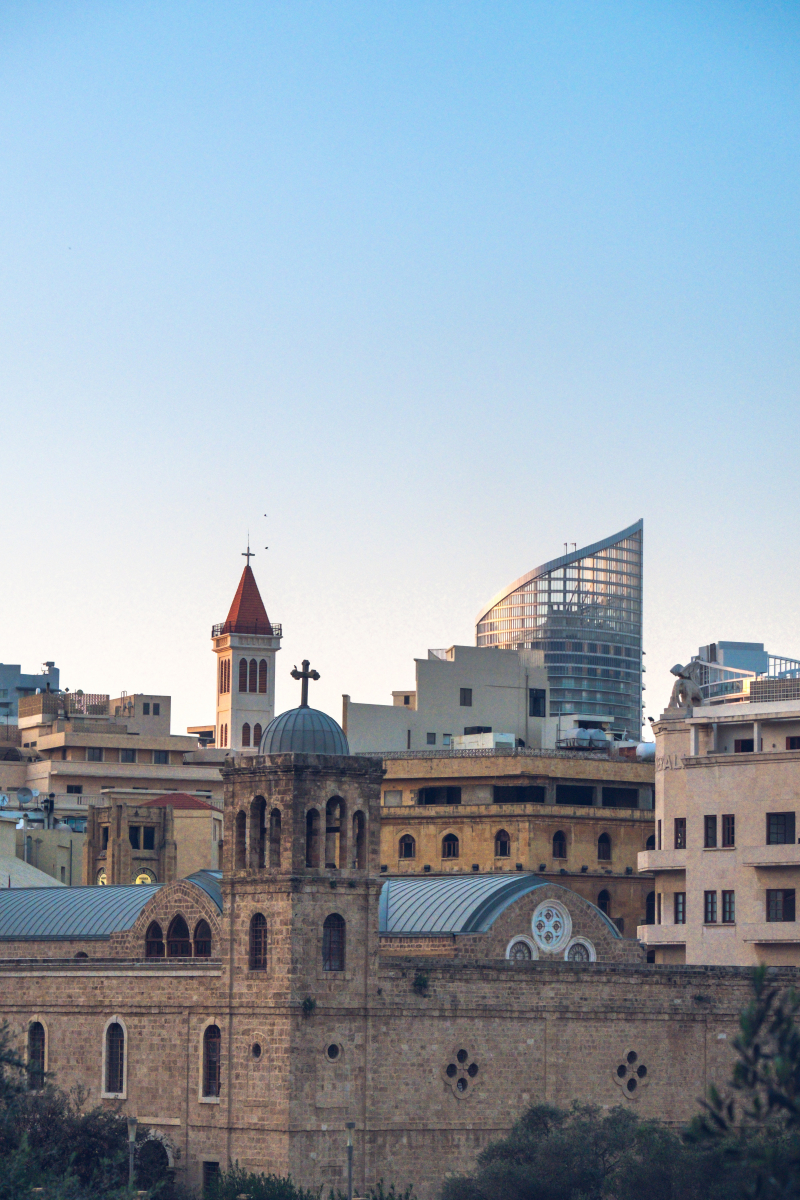
Image by Jo Kassis via pexels.com (photo is used for illustration only) Video by McDAGOS via youtube.com -
The Sursock Museum, which houses several works of modern and contemporary art, is among the top attractions in Beirut. The Nicolas Ibrahim Sursock Museum is another name for the Sursock. The museum is housed in the old residence of Beirut aristocrat Nicolas Sursock. It mostly supports modern art but also occasionally sponsors contemporary shows. The museum is well-known for modern art, Japanese engravings, and Islamic art and has a collection of more than 800 works of art. Beautiful sculptures, graphic arts, and paintings from the 19th and 20th centuries can be explored.
The spacious homes on the street constructed in the tradition of Lebanese classic architecture will astound you, even though the many exhibitions are undoubtedly fascinating! You are surprised by the white walls, arches, and tiny rose windows since the structure stands out in the middle of the dim alleyways. The Sursock museum, which is among the oldest residential areas in Lebanon and is located in the Achrafieh, draws a large number of visitors each year from all over the world who rate it among the top attractions in Beirut. The breathtaking museum's architecture exemplifies Lebanese classical design.
Address: Rue Mar Mikhael, Beirut, Beirut
Phone: +961 1 202 001
Opening hours: 10 am - 6 pm
Rating: 4.5/5.0, 253 Tripadvisor reviews
Website: https://sursock.museum/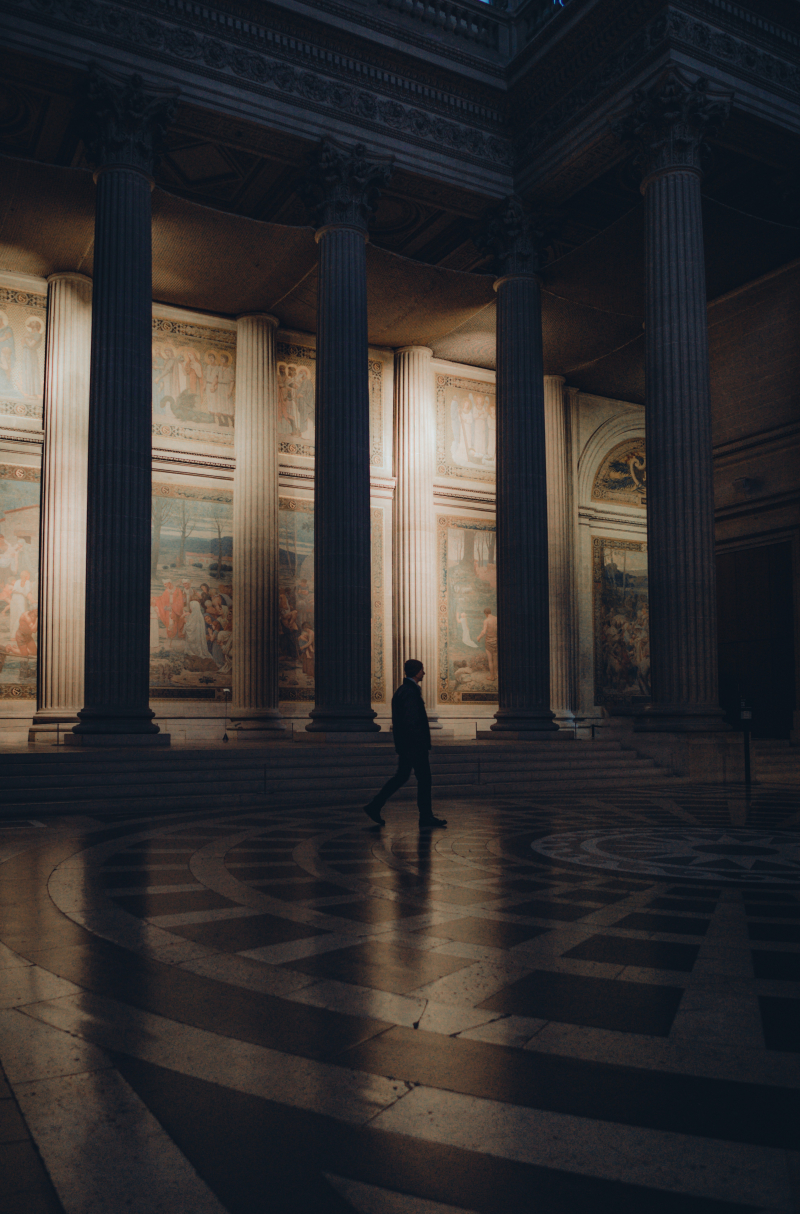
Image by Blue Arauz via pexels.com (photo is used for illustration only) Video by Dim Mih via youtube.com -
It's always wonderful to bring home souvenirs from your travels. The Beirut Souks is a shopping area featuring stores, eateries, cafes, and movie theaters that one simply cannot resist visiting. The Beirut Souks, a Downtown architectural marvel, are the center for high-end and designer brands. Take a stroll through the well-known shopping district, eat, shop, and possibly make a purchase. This location is one of the reasons Beirut is one of the fashion capitals of the Middle East. Restaurants in Lebanon offer delectable cuisines that you'll remember for a very long time.
In the past, Beirut's souks served as the city's commercial hub. Significant damage was done to them during the Lebanese Civil War, and Solidere reconstructed them using the old Greek street grid while preserving the pre-war street names and historic landmarks.
Market is the Arabic word for souk. Because they sell exotic and unusual goods, Beirut's Souks are among the city's most entertaining locations. Tourists should undoubtedly visit the Souk al Ahad, one of the most intriguing sites to visit in Beirut if you're seeking for a memento, even though the modern section of the market is home to the world's top luxury brands. Here, you can haggle over costs with amiable Lebanese vendors to get all different sorts of apparel, jewelry, furniture, and lights.Address: Avenue des Français, Beirut, Beirut
Phone: +961 1 957 000
Opening hours: 2 pm - 4 pm
Rating: 4.0/5.0, 1736 Tripadvisor reviews
Website: https://www.beirutsouks.com.lb/
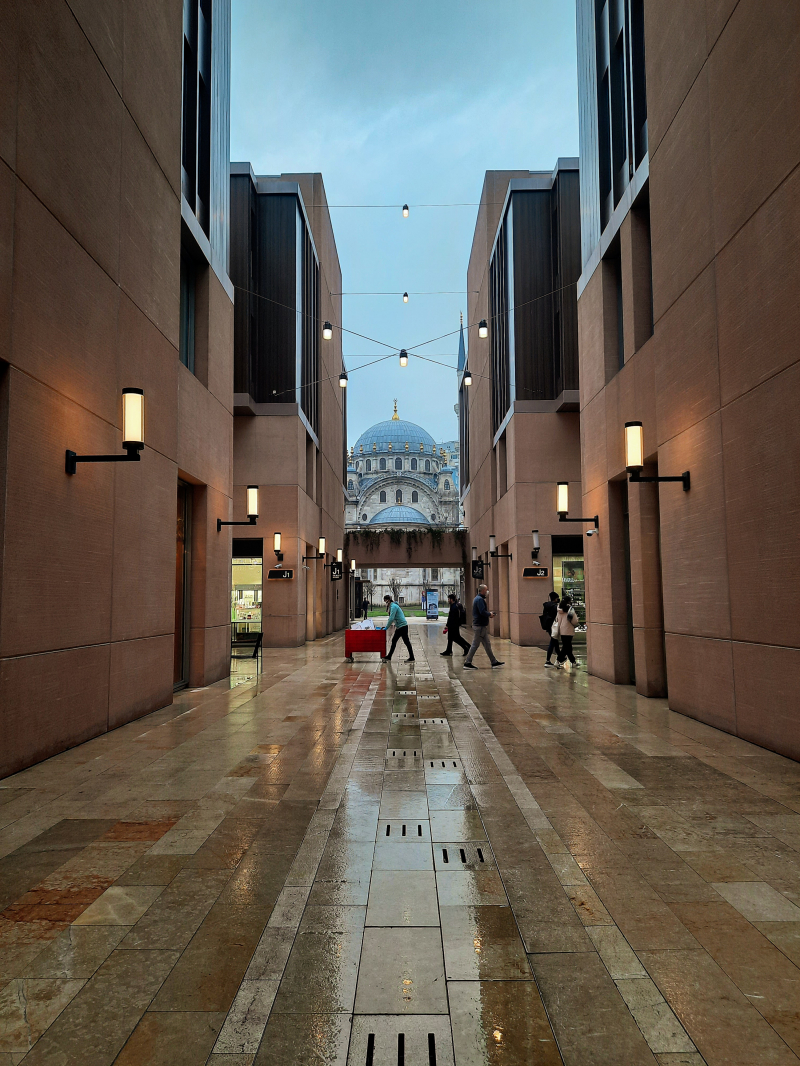
Image by İrem Nur via pexels.com Video by Franc GoodMan. Relaxing Videos via youtube.com -
Rue Hamra, often known as Hamra Street, is a major thoroughfare in Beirut, Lebanon, and one of the city's key diplomatic and commercial centers. It is situated in the same-named neighborhood of Hamra. During the 1960s and 1970s, Hamra Street was the epicenter of intellectual activity in Beirut because of the numerous sidewalk cafes and theaters. Hamra Street and the surrounding area were regarded as Beirut's trendiest neighborhood prior to 1975. The Municipality of Beirut gave the Boulevard a facelift in the middle of the 1990s to entice tourists year-round. Due to its year-round popularity with tourists, Hamra Street was referred to as Beirut's Champs Elysées. This is one of the best places to visit in Beirut.
Tourists and locals alike frequent this location to try and take in the last traces of the intellectual city. Three universities, including the American University of Beirut, several bookshops, and a vibrant nightlife can all be found in Hamra.
Every year in the fall, the Prime Minister sponsors the opening of the Hamra Streets Festival. The purpose of this friendly and cultural event is to highlight the rich diversity of culture and art that exists in Lebanon in general and on Hamra Street in particular. The festival features a wide range of events and activities that cater to people of all ages. The festival promotes amateur musicians, artists, and freelancers across all artistic disciplines and offers flexible entry requirements.
Location: Beirut, Lebanon
Phone: +961 71 293 015
Opening hours: 9 am - 5 pm
Rating: 4.0/5.0, 1386 Tripadvisor reviews
Website: https://alhamrastreet.com/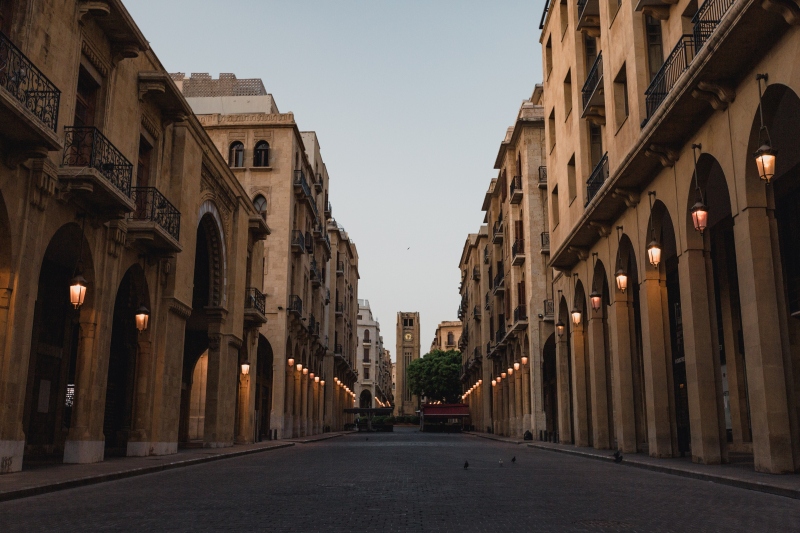
Image by Marten Bjork via unsplash.com Video by Ara Lifetime via youtube.com -
The Pigeon Rocks, a natural wonder in the sea not far from the historic Raouche, are regarded as one of Lebanon's greatest treasures. The two enormous rock formations that make up Pigeons' Rock, often referred to as the Rock of Raouche, are situated in the westernmost point of Beirut. This offshore rock pair, which is 60 meters high, was created during the prehistoric past by a geologic action. The area is bordered by rocks, and traces of human habitation have also been discovered.
One can get a stunning view of the entire area when strolling along the Pigeon Rocks. At any time of day, locals like strolling along the corniche (seaside promenade), but it is extremely crowded just before sunset. Make sure you arrive early and wander the corniche before choosing the ideal location to take in the magnificent sunset. You can be taken around and through the largest rock's arch by neighborhood boat owners. Remember to haggle over the price up front, as is always wise in the Middle East.
Location: Raouché, Beirut, Lebanon
Phone: unknown
Opening hours: all day
Rating: 4.0/5.0, 1162 Tripadvisor reviews
Website: unknown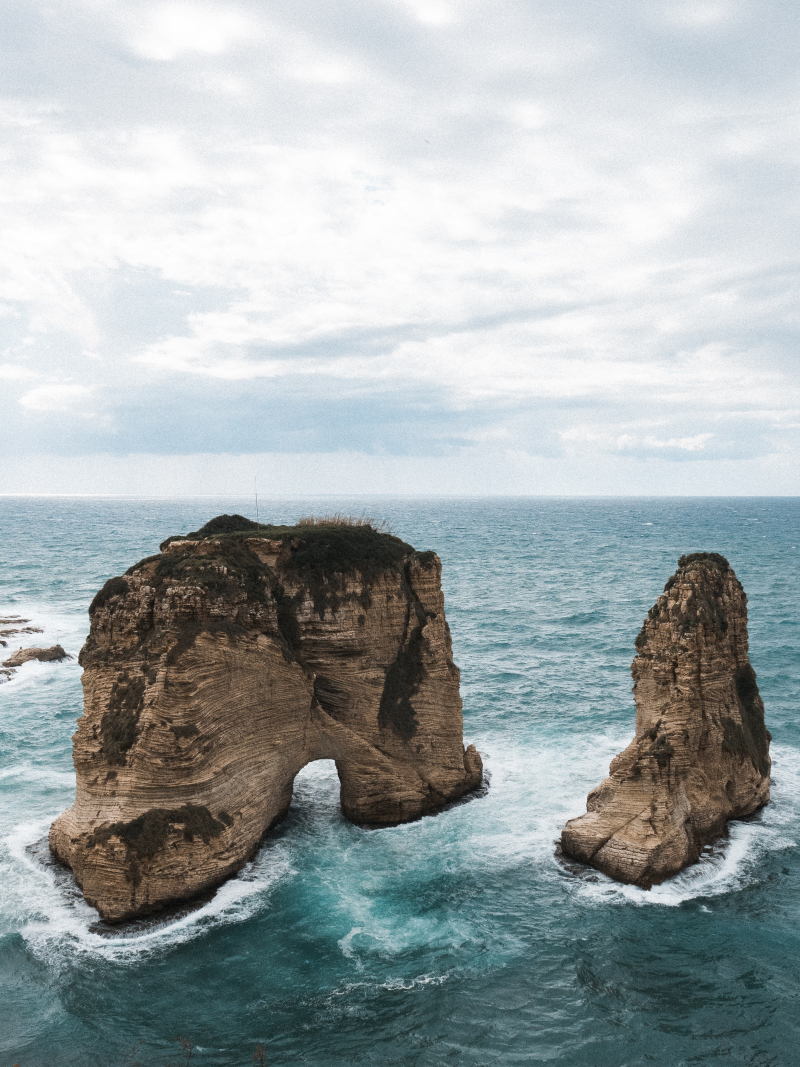
Image by Iakub Arifulin via pexels.com 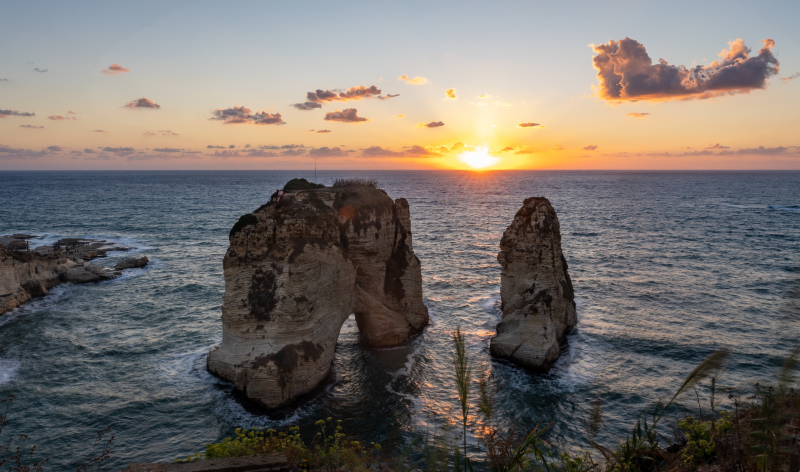
Image by Soly Moses via pexels.com -
The Berytus, located in the center of Beirut's downtown, will not let you down if you're seeking what to visit in the city that will reveal its Roman heritage. The Roman Baths were built during the Roman era as places for bathing and relaxation. These baths, which included swimming pools, rooms with various temperatures, and reading rooms, were a typical amenity in cities where people congregated. The Roman baths are a must-see among all the best places to visit in Beirut. Going on a tour of the Roman Baths will transport you back in time and give you a glimpse of Roman culture and architecture, which is on par with modern architecture.
One of the best tourist attractions in Beirut is the magnificent place because of its antiquity. A complex system of lead or clay pipes and canals was utilized to transport water from the large baths to the numerous pools at the Roman Baths. There are four major baths in total. One of the baths is now used as a music venue, and the lovely site garden is decorated with a variety of medicinal plants.
The bather traveled between warm and hot tubs while passing through variously heated chambers. The heating system, which was under the floor, circulated air that had been warmed by wood fires in nearby vaults between pillars of terracotta disks that heated the marble floor and up through terracotta pipes in the walls. The hot room's marble-tiled pools were fueled by water from the boiler, and the bathers' access to cool water was provided by a sizable stone basin. After the bath, the body was massaged with healing oils. Jesters and musicians could play in the bathhouse's large, airy halls with their high vaulted ceilings.
Location: Beirut, Lebanon
Phone: unknown
Opening hours: Open 24 hours
Rating: 4.0/5.0, 248 Tripadvisor reviews
Website: unknown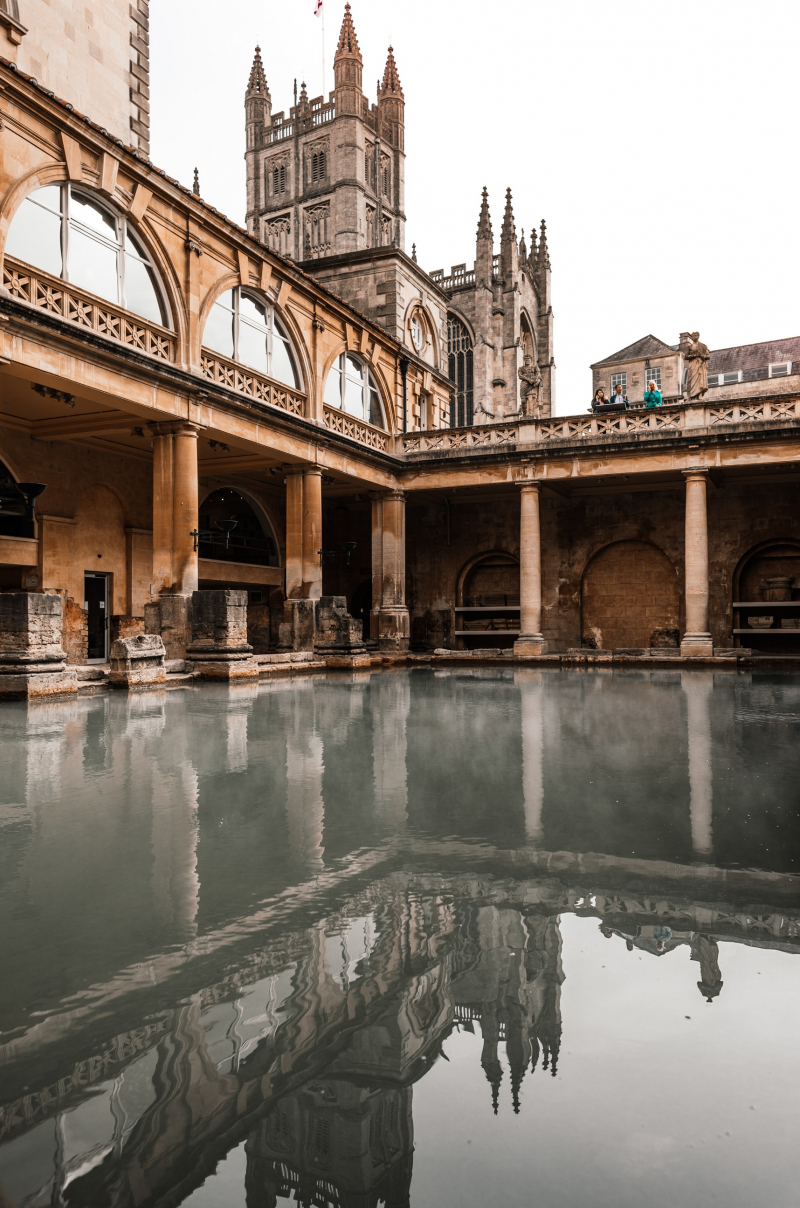
Image by Rachel Claire via pexels.com (photo is used for illustration only) Video by McDAGOS via youtube.com -
A posh residential area in Beirut, Lebanon, is called Saifi Village. The southeasterly edge of Centre Ville is where Saifi Village is situated. With galleries, antique stores, design studios, and specialty boutiques dotting its gorgeous streets, Saifi Village, in the center of downtown Beirut, is destined to become one of the region's hottest art destinations. The Quartier Des Arts in Saifi Village is quickly turning into a hub for locals and visitors alike. This community, which is decorated in a lovely French Colonial style, is home to a number of art galleries and a posh farmer's market.
With its cobblestone lanes, apartment complexes, townhouses, and businesses, Saifi Village is an illustration of a New Urbanist neighborhood. The stores range from a mix of designer boutiques to car dealerships like Ferrari. Also, it is the location of a few art galleries and newly emerging Lebanese fashion boutiques such Bokja Design, Nada Debs, and Vick Vanlian Gallery. In addition, the community has gardens with seasonal plants, flowers, and trees.
Because there are playgrounds for kids, wooden seats, and fountains so that everyone can enjoy the park, it is also a popular spot for family meetings. Farmers sell their fresh organic fruit and other goods every Saturday morning at Souk el Tayeb, a small square in the village.Address: Rue Mkhallissiye, Beirut, Lebanon
Phone: +961 1 575 858
Opening hours: all day
Rating: 4.0/5.0, 176 Tripadvisor reviews
Website: http://www.saifivillage.com/
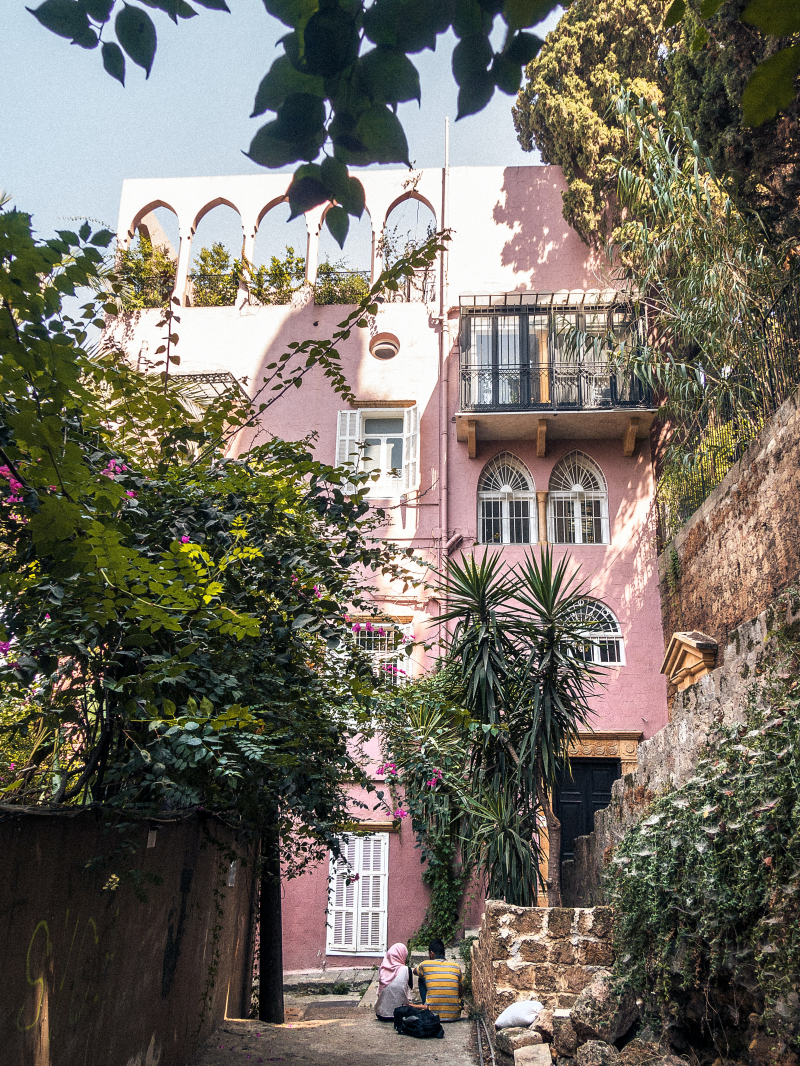
Image by Michal GADEK via unsplash.com Video by Precious Madel Santos via youtube.com -
A UNESCO World Heritage Site, Byblos is one of the oldest continuously inhabited towns in the world. Since its inception 8000 years ago, the city has been home to a community of fishermen. Byblos is one of the top locations to go near Beirut if you enjoy history and archaeology, and it's only an hour's drive from the city. From 5000 BC, the city has been continually inhabited, making it one of the oldest Phoenician cities. This can be considered as one of the Best Places To Visit In Beirut.
French historian Ernest Renan, who oversaw a survey of the region, was responsible for rediscovering the Byblos ancient ruins. The Byblos is one of the best places to visit in Beirut and a delight for history fans because it is bursting with archeological ruins and gorgeous locations. It is bizarre to visit the National Museum of Obelisks, which was constructed between 3200 and 3600 years ago. Other historical sites worth visiting are the Sultan Abdul Majid Mosque and the Crusader Fort.
In Lebanon, there are several cafés where one may unwind and savor savory appetizers and beverages. The historic city is home to a number of attractions that will make your trip something to remember for the rest of your life, such as Byblos Harbour, Saint John-Marc Church, Byblos Wax Museum, and Crusader Castle.Location: Lebanon, Beirut
Phone: unknown
Opening hours: all day
Rating: unknown
Website: unknown
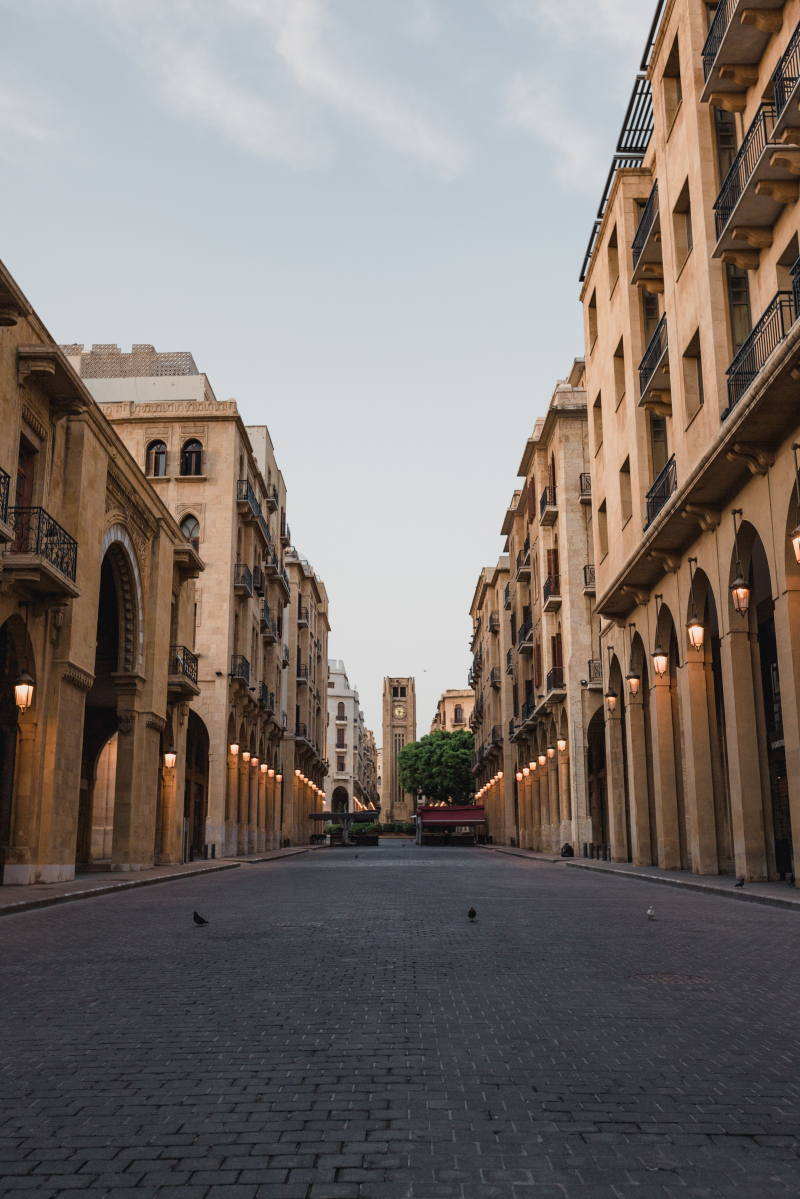
Image by Marten Bjork via pexels.com (photo is used for illustration only) Video by Amazing Places on Our Planet via youtube.com















